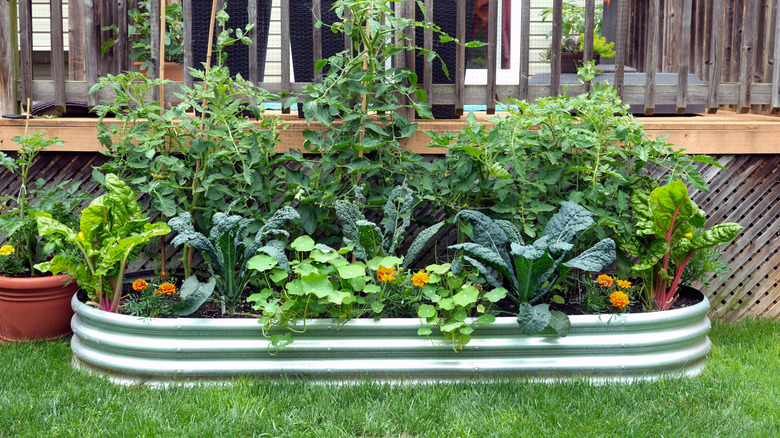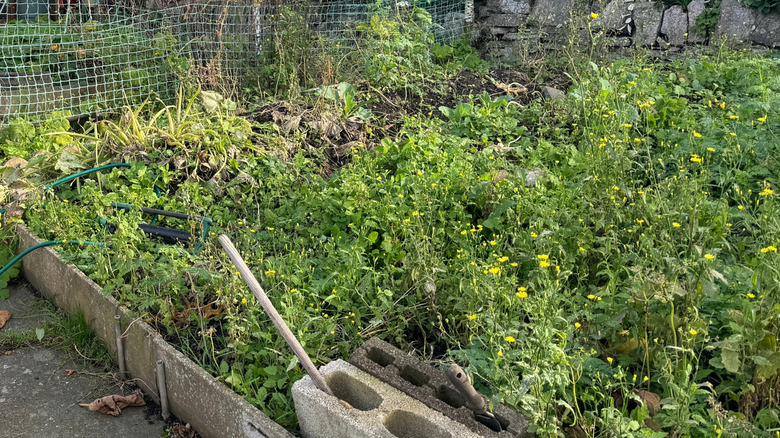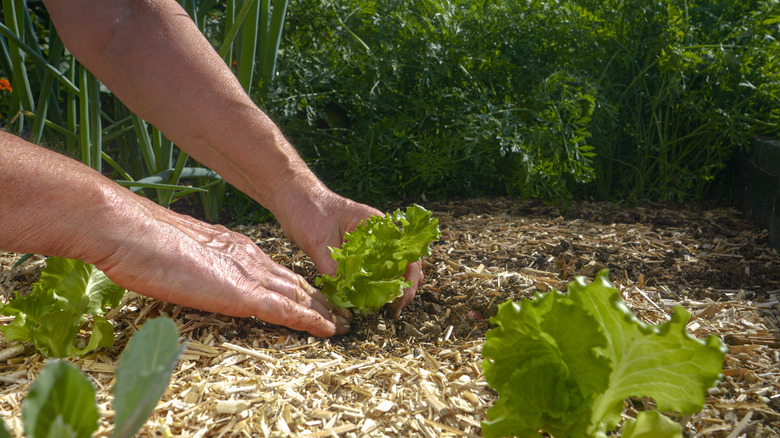The Overlooked Mistake That's Making Your Garden Beds Look Bad
Coming home with a car full of seeds and starter plants is so exciting, you might be tempted to get your new plants into the soil as soon as possible. But there's a key step to complete first: Mapping out your garden with the help of the spacing guidelines that come with each plant. Otherwise, you could be one of the many gardeners who find themselves with an overcrowded garden that's both unsightly and unhealthy.
Impatience can also lead to overcrowding in other ways. For example, some gardeners don't enjoy the emptier look of a new garden, so they add enough plants to fill up the space right away, failing to leave room for future growth. Other times, overcrowding happens purely by accident as plants grow bigger or more quickly than expected.
Overcrowding causes several problems. Plants are forced to compete with one another for nutrients, sunlight, and water, which takes a toll on their health. Overcrowded gardens also become difficult to maintain and keep neat, which turns gardening into a dreaded chore instead of a fun hobby. Fortunately, even if you've already been making this beginner gardener mistake, there are ways to fix it.
What to do with an overcrowded garden bed
Some plants tolerate overcrowding better than others. You'll likely be able to identify if your garden bed is overcrowded by how it looks and whether the plants in it are struggling to thrive. Without enough room to freely grow, some plants may never reach the desired size while others may become leggy. You may notice a disappointing yield in the case of veggies, and pests and diseases are also more common in overcrowded gardens due to the poor air circulation and how close the plants are to each other.
Fixing an overcrowded garden takes work, but is relatively straightforward: You simply need to give the plants more room to breathe by pruning, dividing, and removing plants as needed. Some plants can go straight to the compost pile, while others can be transplanted — they might thrive elsewhere in your home or be used for a new garden bed. The transplanting process may not always be successful, though, since it's stressful on plants. Losing some of your precious plants due to overcrowding is never fun (not to mention a waste of money), so it's much more satisfying to space out your plants properly in the first place.
How to prevent overcrowding, and when to make exceptions
To prevent overcrowding, space out your garden based on the mature size of each plant. That varies a great deal between different plants, so the right spacing also varies; you can find this information on the seed packet or plant label. Use a seed spacer if needed to help you mark the right distance. As you wait for the bed to fill out, you can make it look less bare by covering the soil with mulch or straw. This is also important for preventing weeds and retaining moisture.
If you're really itching for a fuller garden more quickly, look into companion planting and successive planting. Companion plants can often grow a little more snugly together since they have compatible needs, while successive planting helps keep garden beds full and healthy throughout multiple growing seasons. Alternatively, you can overplant at first and be ready to remove some plants as they continue growing. Some plants usually have to be thinned out at some point regardless, such as carrots. It's best to thin seedlings in your veggie garden while they are still young to prevent too much stress from overcrowding.
Overcrowding isn't always terrible for plants. When done intentionally to increase crop yields in a small space, it's known as "intensive" or "high-yield" planting. This technique requires diligent maintenance, as well as careful planning to ensure that each plant is compatible and getting everything it needs to thrive. The soil must be quite deep and nutrient-rich, so it works best for raised beds. Otherwise, giving your plants plenty of space to spread out is the way to go.


